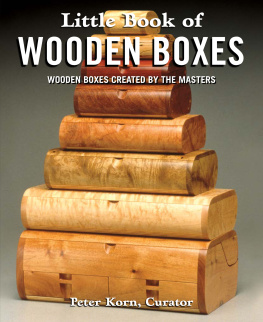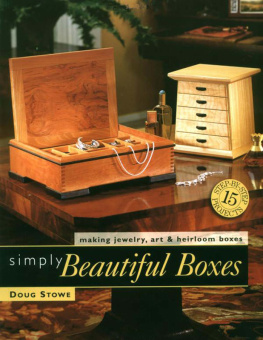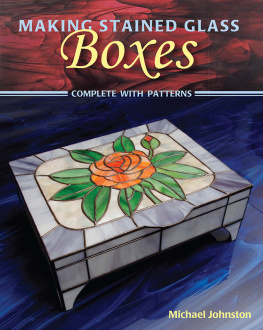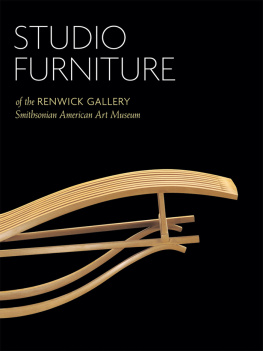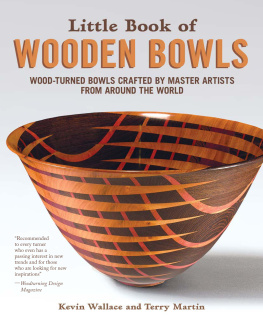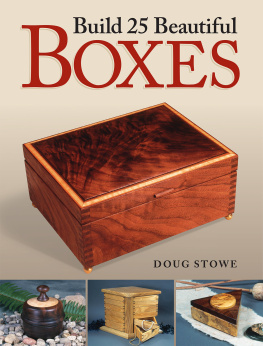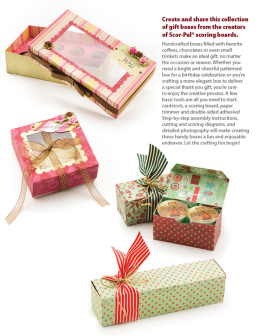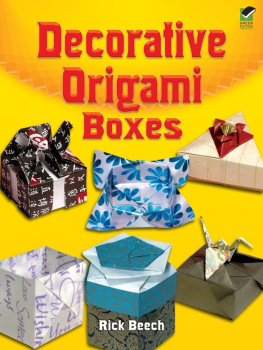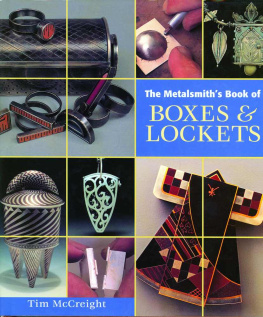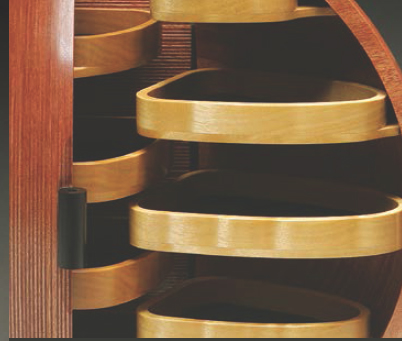Peter Korn - Little Book of Wooden Boxes: Wooden Boxes Created by the Masters (Fox Chapel Publishing) Featuring 31 of Todays Finest Woodworkers & Artisans with Profiles, Insights, and Studio-Quality Photos
Here you can read online Peter Korn - Little Book of Wooden Boxes: Wooden Boxes Created by the Masters (Fox Chapel Publishing) Featuring 31 of Todays Finest Woodworkers & Artisans with Profiles, Insights, and Studio-Quality Photos full text of the book (entire story) in english for free. Download pdf and epub, get meaning, cover and reviews about this ebook. year: 2019, publisher: Fox Chapel Publishing, genre: Non-fiction. Description of the work, (preface) as well as reviews are available. Best literature library LitArk.com created for fans of good reading and offers a wide selection of genres:
Romance novel
Science fiction
Adventure
Detective
Science
History
Home and family
Prose
Art
Politics
Computer
Non-fiction
Religion
Business
Children
Humor
Choose a favorite category and find really read worthwhile books. Enjoy immersion in the world of imagination, feel the emotions of the characters or learn something new for yourself, make an fascinating discovery.
- Book:Little Book of Wooden Boxes: Wooden Boxes Created by the Masters (Fox Chapel Publishing) Featuring 31 of Todays Finest Woodworkers & Artisans with Profiles, Insights, and Studio-Quality Photos
- Author:
- Publisher:Fox Chapel Publishing
- Genre:
- Year:2019
- Rating:5 / 5
- Favourites:Add to favourites
- Your mark:
Little Book of Wooden Boxes: Wooden Boxes Created by the Masters (Fox Chapel Publishing) Featuring 31 of Todays Finest Woodworkers & Artisans with Profiles, Insights, and Studio-Quality Photos: summary, description and annotation
We offer to read an annotation, description, summary or preface (depends on what the author of the book "Little Book of Wooden Boxes: Wooden Boxes Created by the Masters (Fox Chapel Publishing) Featuring 31 of Todays Finest Woodworkers & Artisans with Profiles, Insights, and Studio-Quality Photos" wrote himself). If you haven't found the necessary information about the book — write in the comments, we will try to find it.
This craftsmans companion celebrates the uncontained creativity of woodturners, furniture artists, and elite craftsmen from around the world!
- 31 profiles of todays finest woodworkers and artisans including Andy Buck, Jenna Goldberg, Ulrike Scriba, Hans Weissflog, and more
- Over 250 photos, full-color and studio-quality, of stunning pieces including jewelry boxes, desk boxes, reliquaries, keepsake boxes and more
- Insights and design ideas for spectacular work that takes box-making to a higher level of aesthetic form
- Author Oscar P. Fitzgerald is a nationally known historian, author, lecturer, and consultant
Little Book of Wooden Boxes features 31 of todays finest woodworkers and elite artisanssuch as Michael Hosaluk, Steven Kennard, Richard Raffin, Jacques Vesery, Bonnie Klein, and Hans Weissflogwho share their amazing techniques, their inventive talents, and the inspiration that fuels their distinctive designs.
Each artists profile includes full-color, studio-quality photographs of their most spectacular and inspirational work, including jewelry boxes, desk boxes, reliquaries, keepsake boxes and more, along with insights on their design ideas and objectives.
Curated by nationally known historian and author Oscar P. Fitzgerald, this book is sure to become a treasure in every woodworking library.
Little Book of Wooden Boxes is presented in an attractive pocket-sized 5.75-inch by 7-inch format and will make a cherished gift for any woodworker!
Profiled artists include:
- Bonnie Bishoff and J.M. Syron
- Andy Buck
- Kip Christensen
- Jim Christiansen
- Jean-Christophe Couradin
- Andrew Crawford
- Michael Cullen
- Jenna Goldberg
- Louise Hibbert
- Michael Hosaluk
- Robert Ingham
- Ray Jones
- Kim Kelzer
- Steven Kennard
- Yuji Kubo
- Po Shun Leong
- Peter Lloyd
- Tom Loeser
- Michael Mode
- Craig Nutt
- Jay and Janet ORourke
- Emi Ozawa
- Andrew Potocnik
- Richard Raffan
- Ulrike Scriba
- Jeff and Katrina Seaton
- Tommy Simpson
- Bonnie Klein and Jacques Vesery
- Philip Weber
- Hans Weissflog
Full of ideas for studio artists and advanced hobbyists and should inspire them to see boxes and other containers as works of art, not just as functional objects.
Library Journal
If you are interested in stretching your mind and your woodworking out of the box then this book is for you.
Lumberjocks.com
This is an inspiring book that is sure to appeal, not only to those who either make or wish to make boxes, but also to anyone who enjoys seeing and learning about the very finest work of the worlds great wood artists.
Australian Woodworker Magazine
Peter Korn: author's other books
Who wrote Little Book of Wooden Boxes: Wooden Boxes Created by the Masters (Fox Chapel Publishing) Featuring 31 of Todays Finest Woodworkers & Artisans with Profiles, Insights, and Studio-Quality Photos? Find out the surname, the name of the author of the book and a list of all author's works by series.

